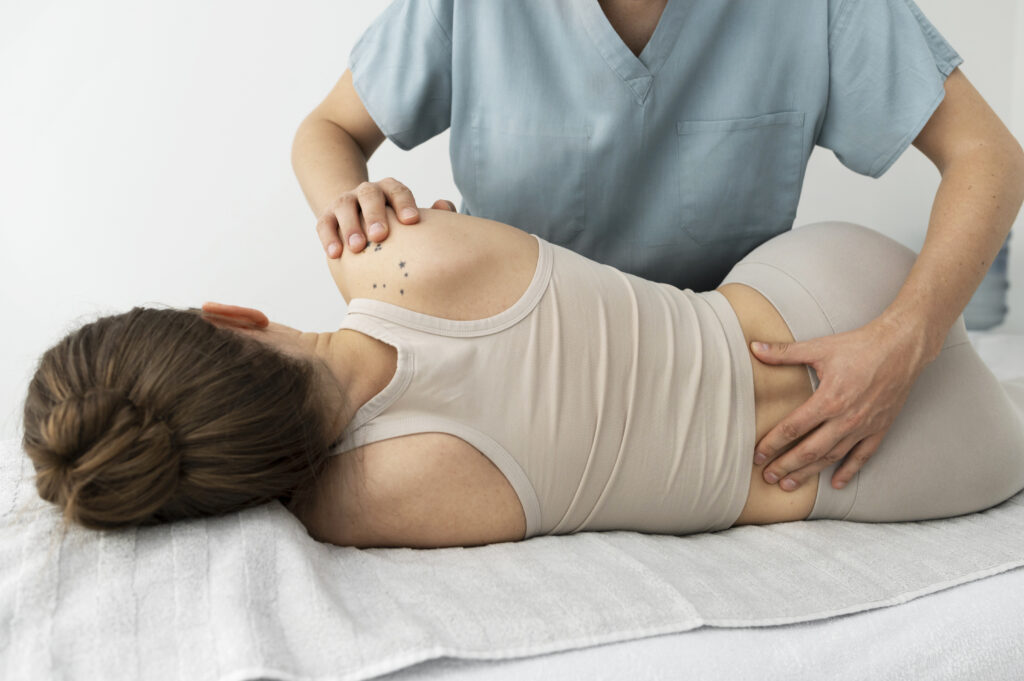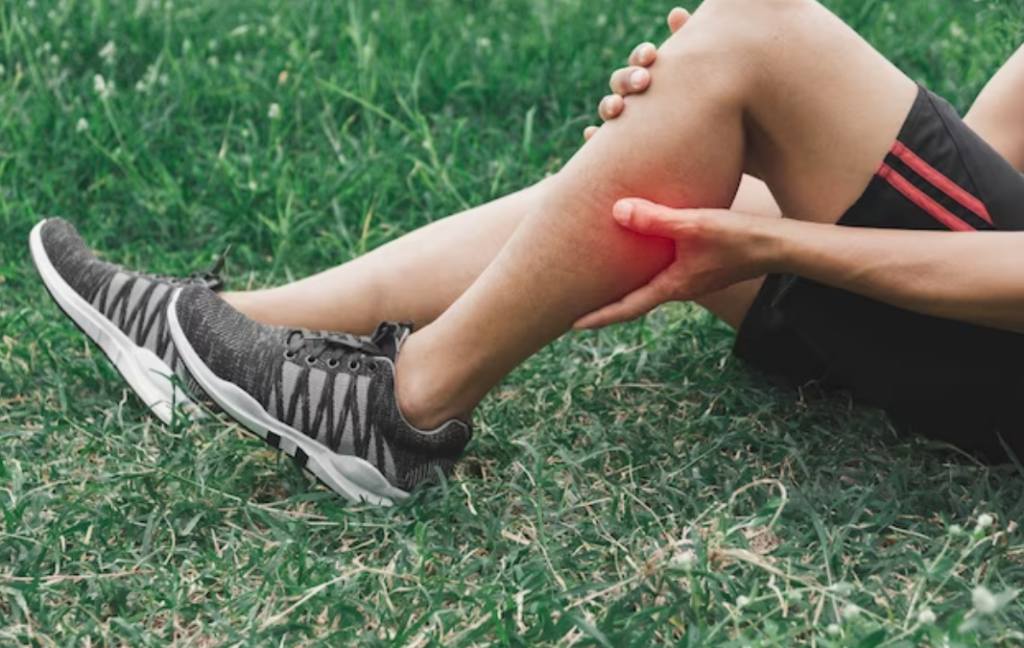When you're dealing with a headache, finding effective relief is essential, and you might be surprised by the power of natural methods. From herbal remedies like feverfew to soothing essential oils such as peppermint, there are various options worth exploring. Acupressure techniques can also provide targeted relief, while staying properly hydrated plays a vital role in prevention. Plus, incorporating relaxation strategies into your routine can make a significant difference. Curious about which methods could work best for you? Let's uncover the details behind these natural solutions.
Herbal Remedies
When it comes to natural headache relief, herbal remedies can be a powerful ally. You'll find that several herbs have been traditionally used to ease headache symptoms, and many people swear by their effectiveness.
One popular option is feverfew. This herb has been used for centuries to combat migraines and tension headaches. Studies suggest that regular consumption of feverfew may reduce the frequency and intensity of headaches. You can take it as a tea, capsule, or tincture.
Another herb worth considering is ginger. Known for its anti-inflammatory properties, ginger can help reduce headache pain, particularly when associated with nausea. You can brew ginger tea or simply chew on a piece of fresh ginger root when you feel a headache coming on.
Peppermint is another effective remedy. The menthol in peppermint helps relax the muscles and improve blood circulation, which may alleviate tension headaches. You can apply diluted peppermint oil to your temples or drink peppermint tea for relief.
Chamomile is also soothing and can help promote relaxation, which is essential when dealing with stress-related headaches. A warm cup of chamomile tea before bed mightn't only ease your headache but also enhance your sleep quality.
Lastly, don't underestimate the power of hydration. Herbal teas can be part of your hydration strategy, providing relief while keeping you well-hydrated.
Essential Oils
If you're looking for a natural way to relieve headaches, essential oils can be a fantastic option. These concentrated plant extracts offer a range of therapeutic benefits, and their calming scents can help soothe your mind and body.
Peppermint oil is one of the most popular choices for headache relief. Its menthol content can enhance blood flow and provide a cooling sensation that eases tension. Simply dab a drop on your temples and massage gently, or inhale the scent directly from the bottle for quick relief.
Lavender oil is another great option, known for its calming and relaxing properties. You can diffuse it in your room or apply a diluted version to your wrists and neck. The soothing aroma can help alleviate stress, which is often a trigger for headaches.
Eucalyptus oil may also be beneficial, especially if your headache is related to sinus issues. Its anti-inflammatory properties can help open up your airways and relieve pressure. Inhale its scent or mix it with a carrier oil and apply it to your forehead for added relief.
To use essential oils safely, always dilute them with a carrier oil, such as coconut or jojoba oil, before applying to your skin. This helps prevent irritation.
Acupressure Techniques
Have you ever considered how acupressure techniques can provide quick relief from headaches? This ancient practice involves applying pressure to specific points on your body, promoting relaxation and alleviating pain. You don't need any special tools—just your fingers and a little know-how.
Here are some key benefits of acupressure for headache relief:
- Targets tension: Focuses on areas where muscle tightness is common.
- Boosts circulation: Enhances blood flow, which can reduce headache intensity.
- Promotes relaxation: Helps relieve stress that may contribute to headaches.
- Easy to learn: You can quickly master a few techniques for immediate use.
To get started, locate the LI4 point, also known as Hegu, situated between your thumb and index finger. Apply firm pressure for 30 seconds to a minute.
You might also want to try the PC6 point, found on your inner wrist, about three fingerbreadths down. Pressing here can help alleviate tension headaches and nausea.
Another effective spot is the GB20 point, located at the base of your skull in the hollows on either side. Gently pressing this area can relieve pain that radiates from the neck.
Incorporating acupressure into your routine can be a simple yet powerful way to manage headaches. Whether at home or on the go, these techniques empower you to take control of your discomfort and improve your overall well-being.
Hydration Strategies
Staying hydrated is essential for preventing headaches, and it's often overlooked. Dehydration can trigger headaches or make existing ones worse, so it's important to keep your body well-hydrated throughout the day. Aim for at least eight 8-ounce glasses of water daily, but remember that individual needs can vary based on activity level, climate, and overall health.
To make hydration easier, carry a reusable water bottle wherever you go. This way, you can sip water regularly, rather than waiting until you feel thirsty, which can be a late sign of dehydration. If plain water doesn't appeal to you, try infusing it with fruits like lemon, lime, or berries for a revitalizing twist. Herbal teas are another great option; they can be hydrating and soothing at the same time.
Pay attention to the signs your body gives you. If you feel fatigued, have dry mouth, or experience dizziness, these could be indicators that you need to drink more fluids. Additionally, consuming water-rich foods like cucumbers, oranges, and watermelon can contribute to your hydration goals.
Be mindful of your caffeine intake, too. While moderate amounts of caffeine can help with some types of headaches, excessive consumption can lead to dehydration. If you're prone to headaches, try to balance your coffee or tea consumption with plenty of water.
Relaxation Methods
Relaxation methods can play an essential role in alleviating headaches and improving your overall sense of well-being. When you experience stress or tension, your body can react by tightening muscles, which often leads to headaches.
By incorporating relaxation techniques into your routine, you can help ease that tension and promote a calmer state of mind.
Here are some effective relaxation methods you can try:
- Deep Breathing: Focus on your breath. Inhale deeply through your nose, allowing your abdomen to expand, then exhale slowly through your mouth. This can help reduce stress and improve oxygen flow.
- Progressive Muscle Relaxation: Tense and then relax each muscle group in your body, starting from your toes and working your way up to your head. This technique teaches your body to recognize tension and release it.
- Meditation: Spend a few minutes each day in a quiet space, focusing your mind and letting go of distracting thoughts. Guided meditations are also available through apps or online resources.
- Gentle Yoga: Engage in gentle stretching and yoga poses that promote relaxation. This helps relieve muscle tension and can improve circulation, which may alleviate headache symptoms.
Conclusion
Incorporating these natural headache relief methods into your routine can make a significant difference in managing your discomfort. By using herbal remedies, essential oils, and acupressure techniques, along with staying hydrated and practicing relaxation methods, you can effectively alleviate headache symptoms. Remember, everyone's body responds differently, so experiment with these approaches to find what works best for you. With a little patience and self-care, you'll be on your way to feeling better in no time!



